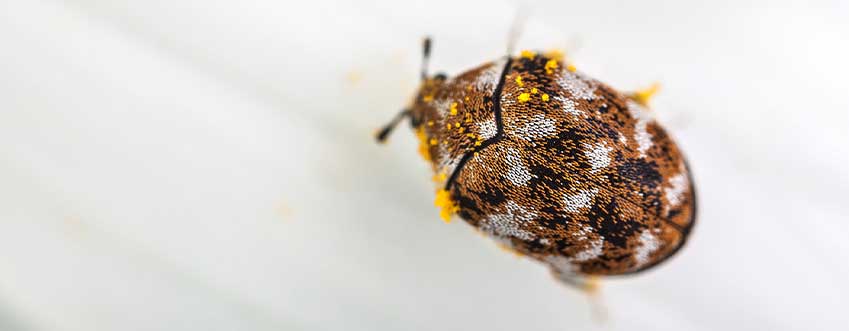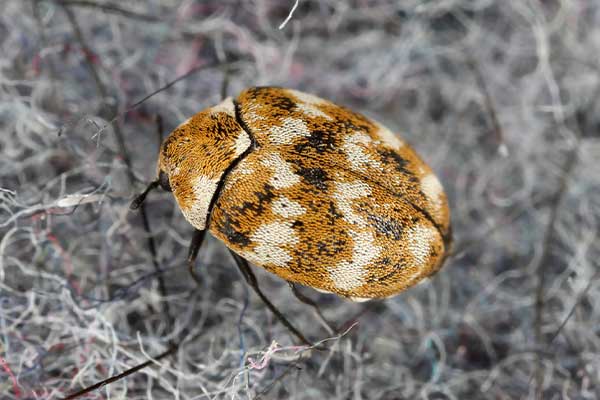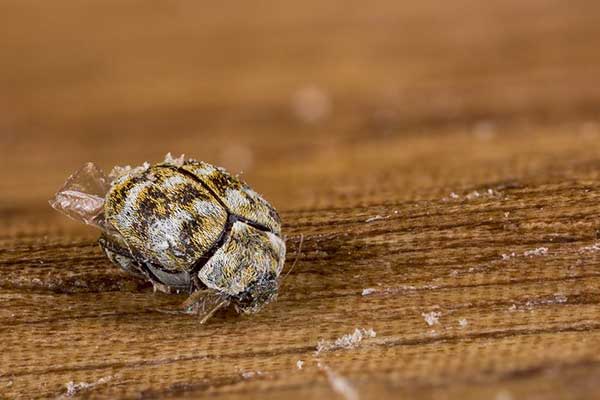CARPET BEETLE CONTROL
Carpet bugs are hated the most for seriously damaging various household objects. Although they get their name from their habit of infecting carpets, they are not limited to this material. They will infest any material made of wool, fur, felt, silk, feathers, skins, or leather. Undiscovered infestations can harm delicate objects such as upholstered furniture, carpets, clothes, linens, and mattresses. To avoid and treat carpet beetles in your house, you must be aware of how they look, how their eggs lay, carpet beetle control measures, and the warning indications of an infestation.
Carpet Beetle is the common domestic pest covered with a USS Pest Control Plan
LIMITED TIME OFFER! GET STARTED FOR ONLY $99!

Quarterly Pest Control
- • Pest control and a comprehensive exterior and interior inspection.
- • Regularly planned exterior treatments.

One-time Pest Control
- • Professionals can assess the situation and advise you on the best way to keep it from coming back.
- • An extensive evaluation and treatment of the inside and outside are part of the package.
Google Review
Removing carpet beetles effectively with USS Pest Control
Is your home being overrun by carpet beetles? Let USS Pest Control be your helper! You may rely on our expertise and experience to handle a carpet beetle infestation. Our experts use advanced instruments and methods to locate the issue and promptly address its root cause.
You need reliable USS Pest Control that can permanently eradicate those invasive pests. Because of this, we employ high-quality therapies customized for every unique scenario; no two homes will ever receive the same care! With our team’s extensive experience handling these pesky insects, you can relax knowing your home is in capable hands.

How to identify carpet beetles infestation?
Small, oval-shaped insects with very short, clubbed antennae are called carpet beetles. Their color can vary from black to shades of brown, yellow, orange, and white in stripes or mottling. Before becoming mature, carpet beetles go through various phases of development. Once fully grown, carpet beetles are usually 2 to 5 mm long. Carpet beetle eggs, which are less than 1 mm long and white or cream in color, represent the first stage of their early existence.

What attracts carpet beetles towards your house?
Due to their attraction to various materials and settings, carpet beetles are a prevalent indoor nuisance. Because of their specific attraction to light, they may break through open windows and doors to enter homes, especially at night. Natural fibers and other organic things containing keratin, which carpet beetles use as food, attract them.
Additionally, they are drawn to clumps of animal hair, which serve as a perfect feeding source for carpet beetle larvae. Likewise, these pests may also be attracted to areas like garages or behind furniture where there are heaps of dead insects. As a result, residences built with these materials may be especially vulnerable to carpet beetle infestation.
Life cycle of carpet beetles
Carpet beetle larvae undergo eight to seventeen molts in their life cycle before becoming pupae. The duration of the larval stage varies depending on the species, temperature, and availability of food; it can be as little as 60 days or as long as a year. When fully developed, larvae pupate for roughly two weeks before becoming adults. The adult carpet beetle, which never survives more than four to eight weeks, is the last stage of the insect’s life cycle.
Keeping infestations of carpet beetles at bay: But how?
It’s usually more successful to prevent carpet beetle infestations than to try to get rid of them once they’ve started. One important preventive measure is cleaning sensitive materials, like woolen, before storing them for an extended time. This eliminates the smells that draw these pests and kills any eggs or larvae that might be there. Next, stuff the items into containers or plastic bags that fit snugly. You can use moth balls, flakes, or crystals; the key is to apply them properly and carefully for maximum effect. Furs and other valuables can be housed in cold vaults, a facility several department stores and furriers provide.
Regular Inspection of Carpet Beetles
Regular indoor plants and gardens inspections are another preventive action because adult beetles may become drawn to these environments and end up inside. Frequent vacuuming can assist in getting rid of larval food sources and possibly even kill beetles that are making their nests in carpets. Fix door and window screens to keep carpet beetles out of a building. It is advantageous to regularly clean closets, upholstered furniture, drapes, rugs, and stored textiles. It is advised to contact a licensed carpet beetle control professional if a significant infestation takes place. Eliminating blooming plants and shrubs from the building’s exterior can lessen pest pressure. Keep doors and windows completely closed to prevent adult beetles from invading.

FAQs: Questions people frequently ask about Carpet Beetles
All dust and fluff from airing cupboards, shelves, floorboards, carpets, and upholstery should be vacuumed. Thoroughly clean the floor and carpet after lifting the carpets and underlay. Woolly bears require the use of an insecticide; items that are impacted should be sprayed or dusted with a substance marked for carpet beetle removal.
Vinegar’s strong acidity makes it an effective way to perform carpet beetle removal in your house. Although there are more powerful pest control treatments, vinegar can still be useful! It can swiftly neutralize and kill carpet beetles if sprayed directly on them. Unlike other insects, though, carpet beetles might not be repelled by it.
Although carpet beetle larvae do feed on fabrics, adult carpet bugs do not bite or actually consume cloth. Adults lack the mandibles (teeth) necessary to puncture the skin by biting since they feed on plant pollen and nectar found outdoors.
Wool blankets and apparel kept in closets, basements, and attics are also commonly contaminated. Examine any place where lint, particularly hair from dogs or cats, tends to gather—under carpets and around their edges, beneath furniture that isn’t frequently moved, and in cracks, registers, and ducts in the floor.
Carpet beetles are indeed able to fly, and they can enter your house through open windows, which is how they got inside in the first place. Unfortunately, carpet bugs’ ability to fly increases their nuisance value and facilitates their proliferation throughout your home.
Hundreds of tiny white or yellow eggs, depending on the species, will be laid by the female beetle. Decomposing leaves, rotting timber and even animal excrement can harbor the eggs. Certain beetles produce live larvae by retaining their eggs inside.
They will mostly consume animal protein-containing materials such as feathers, furs, silk, wool, and carpets when they are indoors. What draws them in most are the food, grease, and sweat on these objects. They might also consume dried dairy products or meals made of grains.
Experiencing carpet beetles? Get in touch with USS Pest Control
Because carpet beetles are elusive and have a diverse diet, managing them can be difficult! A serious infestation may require professional assistance, even if preventive and do-it-yourself therapies can be somewhat successful. Please contact USS Pest Control as soon as possible if you are experiencing a carpet beetle infestation.

With the skills and resources necessary to tackle your pest issues head-on, team of USS Pest exterminator experts will make sure your house is secure and free of pests. Keep in mind that managing the infestation will be simpler the sooner you take action. Give us a call to arrange an inspection today.


